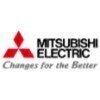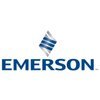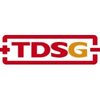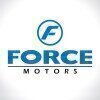Production DET
70+ Production DET Interview Questions and Answers

Asked in Rane NSK Steering Systems

Q. Who is the better ? Petrol engine or diesel engine.
Both petrol and diesel engines have their own advantages and disadvantages.
Petrol engines are generally smoother and quieter than diesel engines.
Diesel engines are more fuel-efficient and have more torque than petrol engines.
Petrol engines are better suited for city driving while diesel engines are better for long-distance driving.
The choice between petrol and diesel engines depends on the individual's driving needs and preferences.

Asked in Aditya Birla Group

Q. What is boiling point? Boiling point of water in hills? Range and approach in cooling towers? What is conduction, convection and radiation? What you made in project? From where you did your summer internship? E...
read moreBoiling point is the temperature at which a liquid turns into a gas.
Boiling point of water in hills is lower than at sea level due to lower atmospheric pressure.
Cooling towers use a range of approaches such as evaporative cooling and air-cooled heat exchangers.
Conduction is the transfer of heat through a material, convection is the transfer of heat through a fluid, and radiation is the transfer of heat through electromagnetic waves.
I cannot answer the project and summer inter...read more

Asked in L&T Valves

Q. What is stapper motor And how transmission electrical power. what is corona. Advantages of high voltage transmission. Which losses in transmission.and what is protected device.
A stepper motor is a type of brushless DC electric motor that divides a full rotation into a number of equal steps. High voltage transmission has advantages such as reduced line losses and lower cost per unit of power transmitted.
Stepper motor is a brushless DC electric motor that divides rotation into steps
High voltage transmission reduces line losses and cost per unit of power
Corona is a discharge of electricity from a sharp conductor at high voltage
Losses in transmission i...read more

Asked in Rane NSK Steering Systems

Q. What is the compression ratio of a diesel engine?
The compression ratio of a diesel engine varies from 14:1 to 25:1 depending on the engine design and application.
Compression ratio is the ratio of the volume of the combustion chamber at its largest to its smallest volume
Higher compression ratios result in better fuel efficiency and power output
Compression ratios for diesel engines typically range from 14:1 to 25:1
The compression ratio of an engine can be calculated by measuring the volume of the combustion chamber at its lar...read more

Asked in Rane NSK Steering Systems

Q. What is the Poisson ratio?
The Poisson ratio is the ratio of lateral strain to longitudinal strain when a material is stretched or compressed.
It is a measure of a material's ability to deform in one direction when it is stretched or compressed in another direction.
It is denoted by the Greek letter nu (ν).
The Poisson ratio is always between -1 and 0.5.
For example, rubber has a Poisson ratio of around 0.5, meaning it can stretch a lot in one direction while compressing very little in the other direction.

Asked in Smile Electronics

Q. What do you know about electronics?
I have knowledge of electronics and its applications in various fields.
I have studied basic electronics in my academic curriculum.
I am familiar with electronic components such as resistors, capacitors, transistors, and diodes.
I have practical experience in designing and building simple electronic circuits.
I understand the principles of digital electronics and have worked with logic gates and flip-flops.
I am aware of the applications of electronics in fields such as telecommun...read more

Asked in Escorts Kubota Limited

Q. Modal wise in-house parts planning in plasma and steel cutting planning at plasma line
Modal wise in-house parts planning involves optimizing production schedules for plasma and steel cutting at the plasma line.
Utilize modal analysis to determine the most efficient production schedule for in-house parts planning
Consider factors such as material availability, machine capacity, and order deadlines
Implement just-in-time inventory management to reduce waste and improve efficiency


Q. What is gravitational force and how would you define it?
Gravitational force is the attraction between two masses, proportional to their mass and inversely proportional to the square of the distance.
It is described by Newton's Law of Universal Gravitation.
Formula: F = G * (m1 * m2) / r^2, where F is the gravitational force, G is the gravitational constant.
Example: The Earth exerts a gravitational force on objects, causing them to fall.
The Moon's gravitational pull affects ocean tides on Earth.
Gravitational force keeps planets in or...read more
Share interview questions and help millions of jobseekers 🌟


Asked in Tata Motors

Q. What is the least count of a vernier caliper?
The least cost of a vernier caliper can vary depending on the brand, quality, and features.
The cost of a vernier caliper can range from $10 to $200 or more.
Factors affecting the cost include the material used, accuracy, brand, and additional features like digital display.
Cheaper vernier calipers may lack precision and durability compared to more expensive ones.
Popular brands like Mitutoyo, Fowler, and Starrett offer a wide range of vernier calipers at different price points.

Asked in Mitsubishi Electric India

Q. What experience do you have in the automotive industry?
Yes, I have experience paying for automotive industry expenses.
I have paid for vehicle maintenance and repairs.
I have purchased car insurance.
I have bought new tires for my vehicle.
I have paid for registration and licensing fees.
I have purchased fuel and other automotive supplies.

Asked in Suzuki Motorcycle

Q. How many types of breaks are there?
There are two main types of breaks: rest breaks and meal breaks.
Rest breaks are short breaks during the workday to rest and recharge.
Meal breaks are longer breaks typically taken for eating meals.
Examples: 15-minute rest break, 30-minute meal break

Asked in Fertilisers and Chemicals Travancore

Q. What are the working principles of a centrifugal pump?
Centrifugal pumps work on the principle of converting rotational kinetic energy into hydrodynamic energy to move fluid through the pump.
Centrifugal force is generated by the rotation of the impeller within the pump casing
Fluid enters the pump through the center of the impeller and is flung outwards by centrifugal force
The fluid is then directed towards the pump outlet by the pump casing
The kinetic energy of the fluid is converted into pressure energy as it moves through the p...read more

Asked in Emerson Electric Co.

Q. Transformer use purpose and type of transformer parts transformer name
Transformers are used to change the voltage level of electricity for transmission and distribution. They consist of parts like core, windings, and insulation.
Transformers are used to step up or step down voltage levels for transmission and distribution of electricity.
Common types of transformers include power transformers, distribution transformers, and instrument transformers.
Key parts of a transformer include the core, windings, insulation, and bushings.
Examples of transfor...read more

Asked in Subros

Q. What processes occur in the evaporator core?
The evaporator core is responsible for cooling and dehumidifying the air in the HVAC system of a vehicle.
Receives refrigerant from the compressor
Air passes over the evaporator core, cooling it down
Heat is absorbed from the air, causing it to cool
Moisture in the air condenses on the evaporator core, dehumidifying the air
Cooled and dehumidified air is then blown into the vehicle's cabin

Asked in Emerson Electric Co.

Q. What is 5S and how is it used in an industrial setting?
5S is a method used in industrial settings to organize and maintain cleanliness for improved efficiency and safety.
Sort: Remove unnecessary items from the workspace
Set in order: Arrange necessary items in a logical and efficient manner
Shine: Clean and inspect the workspace regularly
Standardize: Establish protocols and standards for maintaining the workspace
Sustain: Continuously uphold the 5S principles to ensure long-term success

Asked in Jio

Q. What is the selection process at Jio Reliance?
The selection process at Reliance Jio involves multiple stages to assess candidates' skills and fit for the organization.
Application Submission: Candidates submit their resumes through the Jio careers portal.
Initial Screening: HR reviews applications to shortlist candidates based on qualifications and experience.
Aptitude Test: Shortlisted candidates may take an online aptitude test to evaluate their analytical skills.
Technical Interview: Candidates undergo a technical intervi...read more

Asked in TDS Lithium-Ion Battery

Q. What is RCA and why is the 'why why why' analysis important?
RCA stands for Root Cause Analysis, a method used to identify the underlying cause of a problem or issue.
RCA is a systematic process for identifying the root cause of a problem or issue.
It involves investigating the problem, identifying possible causes, and determining the primary cause.
RCA helps prevent the issue from recurring by addressing the root cause rather than just the symptoms.
Example: If a production line keeps breaking down, RCA would involve looking into factors ...read more

Asked in Krishna Maruti

Q. Minimum powder coating DFT 20 mc Highest powder coating??
Understanding powder coating thickness: minimum DFT is 20 microns; maximum varies based on application and material.
DFT stands for Dry Film Thickness, crucial for durability and appearance.
Minimum DFT of 20 microns ensures adequate protection against corrosion.
Maximum DFT can reach up to 100 microns or more, depending on the coating type.
For example, automotive parts may require higher DFT for better wear resistance.
Excessive DFT can lead to issues like cracking or peeling.


Q. What are the key performance indicators in a manufacturing company?
Key words in manufacturing encompass essential concepts that drive efficiency, quality, and productivity in production processes.
Lean Manufacturing: Focuses on minimizing waste while maximizing productivity. Example: Toyota Production System.
Six Sigma: Aims to improve quality by identifying and removing causes of defects. Example: Motorola's quality improvement initiatives.
Just-In-Time (JIT): Inventory strategy to increase efficiency and decrease waste by receiving goods only...read more
Asked in The Good Stuff

Q. What is the difference between quality assurance and quality control?
Quality assurance focuses on preventing defects, while quality control focuses on identifying and fixing defects.
Quality assurance is process-oriented, focusing on preventing defects before they occur.
Quality control is product-oriented, focusing on identifying defects after they occur.
Quality assurance involves processes like audits, reviews, and process improvements.
Quality control involves activities like inspections, testing, and sampling.
Example: In a manufacturing plant...read more

Asked in Krishna Maruti

Q. What are the differences between zinc phosphate coating and iron phosphate coating?
Zinc phosphate coating offers superior corrosion resistance compared to iron phosphate coating, which is primarily for surface preparation.
Zinc phosphate provides better corrosion resistance than iron phosphate.
Iron phosphate is often used as a pre-treatment before painting.
Zinc phosphate coatings are commonly used in automotive and aerospace industries.
Iron phosphate is typically used in household appliances and metal furniture.
Zinc phosphate coatings can enhance adhesion of...read more

Asked in Mehta Cad Cam Systems

Q. What is the full form of CNC?
Computer Numerical Control
Stands for Computer Numerical Control
Used in manufacturing processes to control machining tools and 3D printers
Automates the operation of machines based on pre-programmed sequences of commands

Asked in Escorts Kubota Limited

Q. Find out ? Solvent Binders Additives Pigment Dryer
Solvent, binders, additives, pigment, and dryer are essential components in the production of coatings.
Solvent: used to dissolve the binder and additives to create a liquid mixture
Binders: provide adhesion and cohesion to the coating, holding the pigment in place
Additives: enhance the performance and properties of the coating, such as durability or color
Pigment: provides color and opacity to the coating
Dryer: accelerates the drying process of the coating

Asked in Mitsubishi Electric Automotive India

Q. What is a basic principle of a transformer?
A basic rule of transformer is that the primary and secondary windings must not be connected together directly.
Primary and secondary windings should never be short-circuited.
The transformer should be operated within its specified voltage and current ratings.
Proper insulation should be maintained to prevent electrical leakage.
Polarity should be observed when connecting the primary and secondary windings.

Asked in Fertilisers and Chemicals Travancore

Q. What are the units of force?
The unit of force is the newton (N), which is defined as the amount of force required to accelerate a mass of one kilogram at a rate of one meter per second squared.
The unit of force is the newton (N)
It is defined as the amount of force required to accelerate a mass of one kilogram at a rate of one meter per second squared
Other units of force include pound-force (lbf) and dyne (dyn)

Asked in Emerson Electric Co.

Q. Why is insulation used in transformers?
Insulation is used in transformers to prevent electrical leakage and ensure safety and efficiency.
Insulation prevents electrical leakage and ensures safety by reducing the risk of electric shock or short circuits.
It helps maintain the efficiency of the transformer by reducing energy loss through leakage currents.
Different types of insulation materials are used based on the voltage and application of the transformer, such as oil, paper, or resin.
Proper insulation also helps in...read more

Asked in Tata Advanced Systems

Q. What is Hooke's Law?
Hook's law states that the force required to extend or compress a spring is directly proportional to the distance it is stretched or compressed.
It is a principle in physics that describes the relationship between the force applied to a spring and the distance the spring stretches or compresses.
The law states that the force required to extend or compress a spring is directly proportional to the distance it is stretched or compressed.
The constant of proportionality is known as ...read more

Asked in Saud Bahwan Group

Q. What is welding?
Welding is a process of joining two or more metal parts by heating them to a melting point and then allowing them to cool and fuse together.
Welding requires a heat source, such as a torch or electric arc, to melt the metal parts
The melted metal parts are then allowed to cool and fuse together, creating a strong bond
Different types of welding include MIG, TIG, and stick welding
Welding is used in various industries, including construction, manufacturing, and automotive
Welding c...read more

Asked in Force Motors

Q. What are the differences between a four-stroke engine and a two-stroke engine?
Four stroke engines have separate intake, compression, power, and exhaust strokes, while two stroke engines combine intake and exhaust in one stroke.
Four stroke engines have valves for intake and exhaust, while two stroke engines use ports
Four stroke engines are more fuel efficient and produce less pollution
Two stroke engines have simpler design and are lighter in weight
Examples: Four stroke - car engines, Two stroke - chainsaws

Asked in Mitsubishi Electric Automotive India

Q. What is a diode and what are its characteristics?
A diode is a semiconductor device that allows current to flow in one direction only.
Diodes have a forward voltage drop, typically around 0.7V for silicon diodes
They have a reverse breakdown voltage, beyond which they conduct in the reverse direction
Diodes exhibit non-linear current-voltage characteristics
Common types include rectifier diodes, zener diodes, and light-emitting diodes (LEDs)
Interview Experiences of Popular Companies








Reviews
Interviews
Salaries
Users

















